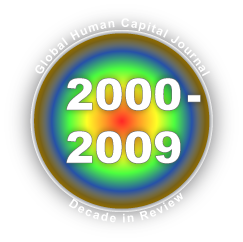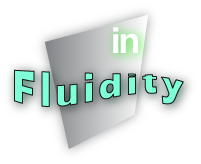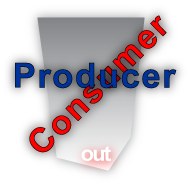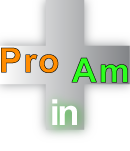Decade in Review 2000-2009 reveals how relationships on demand are changing economics + The emergence of the Web as creative destroyer of the Industrial Economy
 We need to upgrade the turntable again! When I emerged from undergrad in the eighties, the economy was rotating at 16rpm, which we doubled in the nineties with Web 1.0 to 33rpm. The 2000s had us grooving at 78rpm. Even though one part of me says that this metaphor is poorly chosen because it’s retro, it also reflects another key trend: atomization and mashing up.
We need to upgrade the turntable again! When I emerged from undergrad in the eighties, the economy was rotating at 16rpm, which we doubled in the nineties with Web 1.0 to 33rpm. The 2000s had us grooving at 78rpm. Even though one part of me says that this metaphor is poorly chosen because it’s retro, it also reflects another key trend: atomization and mashing up.
The Web is a communications revolution that speeds the consumption of novelty and its economic value, so it is destroying the Industrial Economy’s main value mechanism: value via efficiency and long product life cycles. During the 21st century’s first decade, the overriding trend is that society and markets in which executives have interest saw extensive disruption and change. That meant volatility. As I’ll discuss, this volatility will continue to accelerate because the transaction costs of communication are plummeting, which drives rapid iteration and change in all areas of human society. At the risk of sounding subjective, I believe this will probably be regarded as one of the most disruptive eras in history.
From 2000 to 2009, I was on the front lines of applying transformative technologies and behaviors to business processes. I’ve advised clients as a management consultant and led initiatives as a marketing executive, so I’ll share my perspective from both. I began the decade advising Fortune 50 companies on their e-business strategy—as a Principal at PricewaterhouseCoopers Management Consulting (PwC). I am ending it advising Fortune 50 companies on their social business strategy—but as an individual. This reflects another aspect of atomization: in the Knowledge Economy, the world is rapidly transitioning to a market of expertise, and structures that contain expertise are diminishing in importance.
 These disruptions have a profound impact on economy and politics. Most immediately, many areas of the world have been gyrating wildly due to the U.S.-sparked financial turmoil. A far more important but overlooked driver is the exhaustion of the Industrial Economy. The Knowledge Economy is still emerging, and executives don’t yet understand its changes or how to create value according to its rules, so we have been in a period of transition, uncertainty and discomfort. The financial crisis precipitated the global slowdown, but the waning of the Industrial Economy is producing the majority of the pain. Industrial Economy muscle is not producing as before, and this was one driver for financial creativity to create the illusion of value during the early 2000s.
These disruptions have a profound impact on economy and politics. Most immediately, many areas of the world have been gyrating wildly due to the U.S.-sparked financial turmoil. A far more important but overlooked driver is the exhaustion of the Industrial Economy. The Knowledge Economy is still emerging, and executives don’t yet understand its changes or how to create value according to its rules, so we have been in a period of transition, uncertainty and discomfort. The financial crisis precipitated the global slowdown, but the waning of the Industrial Economy is producing the majority of the pain. Industrial Economy muscle is not producing as before, and this was one driver for financial creativity to create the illusion of value during the early 2000s.
New entrants are rebooting industry and will continue to change its rules—and revise per unit profit downward, far downward. Want a $2,000 car? Don’t go the the U.S., go to India. During the next ten years, this will be true for an increasing spectrum of goods, as well as services like healthcare. There will be massive innovation because China, India, Indonesia, Rwanda and myriad others must innovate to increase their standards of living; their people can see, hear and touch how others live (they have friends worldwide), and they are more restive when they perceive that they live so much differently. Global terrorism is one channel for these disparities that is, well, terrifying. September 11, 2001 made that clear to the U.S., which had heretofore been largely insulated from terrorism. That shocked everyone worldwide because small networked groups had proven that they could wreak havoc even to the most powerful.
Web 1.0 Retrospective: Information and Transactions on Demand
 But our focus here is the rise and transformation of the Web from 2000-2009. As I wrote in my review of Grooming, Gossip, and the Evolution of Language, Robin Dunbar (Dunbar’s Number) posits that human language arose through the need to upgrade our capacity for social grooming (read it; one of the most important books I read in the decade). The growth of “the Web” is another profound upgrade in human communication, so its importance is core to human existence. This is not a “tech innovation” proposition—all of humanity, from family structure, work structure and personal lives will be affected significantly.
But our focus here is the rise and transformation of the Web from 2000-2009. As I wrote in my review of Grooming, Gossip, and the Evolution of Language, Robin Dunbar (Dunbar’s Number) posits that human language arose through the need to upgrade our capacity for social grooming (read it; one of the most important books I read in the decade). The growth of “the Web” is another profound upgrade in human communication, so its importance is core to human existence. This is not a “tech innovation” proposition—all of humanity, from family structure, work structure and personal lives will be affected significantly.
The Web began the decade as a relative novelty and ended it as with the dubious status of an omniscient utility in many parts of the world. Today, it creates little value itself, but everything depends on it to function. Web 1.0 gave us information on demand: today we take for granted that we can just “Google it.” Flip the switch, the information will be there. Prior to the Web, information was expensive and very difficult to get, and now it’s free.
 Yahoo, Excite, Altavista et al delivered information, and e-commerce delivered goods. Amazon.com redefined retail, which began the decade as a necessary activity to procure goods; however, by 2009 retail’s value proposition was closer to entertainment. Now retail focuses most on “the shopping experience,” in which furniture and amenities (Champagne, coffee) arguably create a large part of its draw. For an increasing portion of all goods, retail has become abjectly optional.
Yahoo, Excite, Altavista et al delivered information, and e-commerce delivered goods. Amazon.com redefined retail, which began the decade as a necessary activity to procure goods; however, by 2009 retail’s value proposition was closer to entertainment. Now retail focuses most on “the shopping experience,” in which furniture and amenities (Champagne, coffee) arguably create a large part of its draw. For an increasing portion of all goods, retail has become abjectly optional.
2000 was the overture of the Web. Of course, the Internet had existed since the sixties, and networked computing—numerous flavors of LANs, WANs, IP—had been growing since the eighties, but Web 1.0 gave us critical mass for a social and economic transformation. I began as head of marketing for a software architecture boutique in 1995, and it turned out that we soon became one of Sun’s first Java Centers worldwide. I worked with Sun, Netscape, Versant, Rational, Oracle, Forté and others to pitch distributed computing as an alternative to the prevailing “islands of automation” model. This soon came to mean pitching Java and the Internet, which only served as a front end for the revolution going on in the back room. Since the Internet was government-built, it was free, and Mosaic and Netscape gave every computer a free interface that was something that everyone could use. During Web 1.0, business models pushed toward e-commerce to monetize investments in hand-coded Websites. Personal space was jealously guarded under the Privacy banner that regarded information as a self-contained house.
At PwC, I landed in the midst of the e-business storm, which meant applying IP technology and behaviors to “legacy” business processes. Information on demand meant crestfallen market leaders whose products and pricing were ruthlessly exposed as inferior on third-party sites. It jangled value chains, to say the least. The Web 1.0 bust temporarily slowed the pace of adoption but did not change it substantially.
 After consulting at PwC, I transitioned back to technology and led the creation and implementation of nVISIA’s marketing platform to drive demand for high end consulting and (software) architecture services. Service-oriented architecture, Web services and enterprise architecture (EA) represented further maturation of the always-on, distributed “web” that serves as the infrastructure for the Knowledge Economy. SOA, Web services and EA standardize the componentization of the Web’s infrastructure as well as the work processes needed to create and manage it. I saw from the inside that the Web was rapidly becoming electricity, with the result that “tech” was becoming an infrastructure and management play, not an innovation proposition. Nicholas G. Carr struck a nerve with I.T. Doesn’t Matter, but he nailed the overall trend.
After consulting at PwC, I transitioned back to technology and led the creation and implementation of nVISIA’s marketing platform to drive demand for high end consulting and (software) architecture services. Service-oriented architecture, Web services and enterprise architecture (EA) represented further maturation of the always-on, distributed “web” that serves as the infrastructure for the Knowledge Economy. SOA, Web services and EA standardize the componentization of the Web’s infrastructure as well as the work processes needed to create and manage it. I saw from the inside that the Web was rapidly becoming electricity, with the result that “tech” was becoming an infrastructure and management play, not an innovation proposition. Nicholas G. Carr struck a nerve with I.T. Doesn’t Matter, but he nailed the overall trend.
Businesses monetized Web 1.0 in several ways: the transactions themselves (e-commerce), leveraging infrastructure (reducing process costs in e-business) and using the new medium (online advertising). They failed to monetize the information itself, even though many firms tried. However, Web 1.0 did not fundamentally alter society; it nibbled at Industrial Economy assumptions, where Web 2.0 will take huge bites out of them.
Web 2.0 Retrospective: Knowledge and Relationships on Demand
 As wonderful as “the Web” was during Web 1.0, it was still a relatively impersonal place, when seen from the standpoint of pervasive, continuous human communication space. Web 1.0 mirrored the Industrial Economy, which was impersonal, because the focus was on production and products, not people. Web 2.0 gives organizations the chance to become personal, which they must do in order to survive. Web 2.0 is the motor for personality.
As wonderful as “the Web” was during Web 1.0, it was still a relatively impersonal place, when seen from the standpoint of pervasive, continuous human communication space. Web 1.0 mirrored the Industrial Economy, which was impersonal, because the focus was on production and products, not people. Web 2.0 gives organizations the chance to become personal, which they must do in order to survive. Web 2.0 is the motor for personality.
What makes a space human? Faces, emotions, gestures and relationships. Goofing, jokes, gossip, rumors…Web 2.0 is delivering all this, so “the Web” is becoming human. Social networks like Facebook, LinkedIn, MySpace, Cyworld, Bebo, Orkut, Friendster and myriad others offer friends and relationships on demand. Blogging and microblogging platforms like WordPress, Blogger, Twitter, Plurk, Tumblr, Kwippy and Identi.ca give us thoughts and knowledge on demand. Want to know what “the world” (admittedly a subset, but unprecedented and exploding numbers and diversity) thinks about something? Use Google Blog Search, Technorati or Twitter Search, and you’ll have it, instantly, for free. Google, its feathers ruffled by Twitter in 2009, implemented “instant search” in December 2009. Flickr, Twitpic and Facebook give us faces on demand, while YouTube, Vimeo, Skype and others give us motion, gestures and voices. Therefore, “the Web” is rapidly becoming the “town square” for an increasing spectrum of human activity. Other collaborative communities like Del.icio.us, Digg and StumbleUpon enable us to share. Google Docs, Ning and CollectiveX give us collaboration platforms and tools. All this is in the cloud, and it is free to use.
 Although I may be wrongly applying my experience with information technology to it, I think organization is following its tech infrastructure and communications, and organizations are becoming more atomized, distributed and flexible. This is a megatrend. As I said in Geography 3.0: What It Is and What It Means, Web 2.0 now enables us to organize around interests, not geography. We can tap relationships according to highly specific interests. This will also affect political organization, and we must be vigilent to make sure that this transition doesn’t produce nasty special effects. The Industrial Economy was about specializing and compartmentalization, and that included politics that only demanded that citizens vote every four or six years. History is full of power grabs, and this period of disruption will demand far more attention and involvement than before. It will undoubtedly be messy.
Although I may be wrongly applying my experience with information technology to it, I think organization is following its tech infrastructure and communications, and organizations are becoming more atomized, distributed and flexible. This is a megatrend. As I said in Geography 3.0: What It Is and What It Means, Web 2.0 now enables us to organize around interests, not geography. We can tap relationships according to highly specific interests. This will also affect political organization, and we must be vigilent to make sure that this transition doesn’t produce nasty special effects. The Industrial Economy was about specializing and compartmentalization, and that included politics that only demanded that citizens vote every four or six years. History is full of power grabs, and this period of disruption will demand far more attention and involvement than before. It will undoubtedly be messy.
Organizations will continue to unbundle, and customer participation will become the rule. Some collaboration trends to look for in this new decade: pervasive crowdsourcing in which companies and people “ask the crowd” for advice, as P&G consults Innocentive. Ditto for the Threadless model applied to other consumer goods and the ProAm model, beginning in media. Smart companies will look to introduce these rhythms to their work processes. The Threadless community produces the designs and decide what products will be made. Ownership is by the community, not Threadless. ProAm is a model for professionals collaborating with amateurs, and everyone is an amateur for something and an expert in something else. As I learned in software development, as long as you assign roles according to expertise, quality is high and costs fall, and ProAm will come to dominate. The Industrial Economy producer and consumer roles are dying quickly, which means that companies that don’t harness customer collaboration will die.
Privacy will be redefined because people will increasingly share most of their thoughts publicly, and we will soon come to see our Industrial Economy view of privacy as quaint. The truth is, we human beings have never had much privacy. We have always watched each other closely. We’ve spent most of our existence in hunter-gatherer bands, where privacy was nonexistent. When we stopped migrating, we built small towns, where there was minimal privacy. Now we have megacities and walled living spaces around which we don’t know our neighbors and we can do anything in private without anyone knowing or caring, and anonymity reigns. Web 2.0 will lead us to return to little privacy because we will gain more than we lose.
Businesses don’t yet understand how to monetize Web 2.0. How do companies create value, make money, from the increased spectrum of humanity online? The increased humanity of the Web—and its lower transaction costs—means that everyone is undergoing process reengineering, at every level. It is changing how we elect presidents, run campaigns, work, love and buy. But we are all learning the new tools and adapting them to our companies and our lives, so early adopters have been in a period of experimentation while most of the market hasn’t realized that anything is afoot beyond perceiving “Web 2.0” as a bunch of tech hype that they have tuned out. All this free collaboration potential is largely untapped; companies and people need to learn how to create value with it.
 This is difficult for executives because Web 2.0 is a voluntary place. Industrial Economy rules were directed, not voluntary. Emotions didn’t count, innovation was avoided as long as possible because it’s interruptive and value was all about scale. The Knowledge Economy is about collaboration. Web 2.0 is all about emotions and asking, not directing. Companies need to get more comfortable with asking people to help them. Innovation will be continuous, product life cycles for many will shrink from years to months to weeks to hours. Market bifurcation will hold for an increasing portion of products: either they will lead as commodities or tap the entertainment or emotional value stream.
This is difficult for executives because Web 2.0 is a voluntary place. Industrial Economy rules were directed, not voluntary. Emotions didn’t count, innovation was avoided as long as possible because it’s interruptive and value was all about scale. The Knowledge Economy is about collaboration. Web 2.0 is all about emotions and asking, not directing. Companies need to get more comfortable with asking people to help them. Innovation will be continuous, product life cycles for many will shrink from years to months to weeks to hours. Market bifurcation will hold for an increasing portion of products: either they will lead as commodities or tap the entertainment or emotional value stream.
So Web 2.0 is still spinning up, we have not hardly tapped its economic value creation potential, so that will be the focus during the next few years. I think of it as applying these technologies and processes to enterprise work processes. What about Web 3.0? At this point, that’s a question of semantics ,^) but I think it will end up being seen as a couple of feature enhancements to Web 2.0, in the areas of the Geoweb and the Semantic Web (the thinking Web). From a human perspective, Web 2.0 is far more important, and we’ll be on this S-curve for a while. Welcome aboard!
Additional Reading
- Year in Review—2009 is a more micro trend analysis of 2009.
- The Knowledge Economy: The Ultimate Context for Understanding the Future
- If you are a history buff, here are some of my past reviews and predictions while Web 1.0 and Web 2.0 were unfolding.

[…] chronicled in the just-published Decade in Review 2000-2009, the 21st century is proving to be volatile and disruptive in every way, and 2010 will continue the […]